| Date | Text | |
|---|---|---|
29 Dec 1566

Tycho Brahe |
Tycho Brahe Danish astronomer Tycho Brahe, while studying at the University of Rostock in Mecklenburg, loses part of his nose in a duel with fellow nobleman and relation Manderup Parsberg over a mathematical formula. |
|
29 Dec 1605

John Davis |
death John Davis John Davis, English explorer (born 1550) |
|
29 Dec 1689
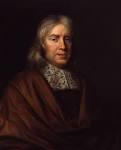
Thomas Sydenham |
death Thomas Sydenham Died 29 Dec 1689 at age 65 (baptized 10 Sep 1624). English physician who became known as the "English Hippocrates." As a founder of clinical medicine, he emphasized bedside observation of disease, and carefully kept a notebook of his clinical observations. He began his practice in London (c.1656) where he made studies on the causes and treatment of epidemics. His treatise on gout (1683) is considered his masterpiece. He named scarlet fever, differentiated it from measles, and was among the first to describe it. Sydenham explained the nature of hysteria and St. Vitus' dance (Sydenham's chorea). He invented laudanum (alcohol tincture of opium) for use in medical practice, was one of the first to use iron in treating iron-deficiency anemia, and helped popularize quinine in treating malaria. |
|
29 Dec 1731

Brook Taylor |
death Brook Taylor Died 29 Dec 1731 at age 46 (born 18 Aug 1685). British mathematician, best known for the Taylor's series, a method for expanding functions into infinite series. In 1708, Taylor produced a solution to the problem of the centre of oscillation. His Methodus incrementorum directa et inversa (“Direct and Indirect Methods of Incrementation,” 1715) introduced what is now called the calculus of finite differences. Using this, he was the first to express mathematically the movement of a vibrating string on the basis of mechanical principles. Methodus also contained Taylor's theorem, later recognized (1772) by Joseph Lagrange as the basis of differential calculus. A gifted artist, Taylor also wrote on basic principles of perspective (1715) containing the first general treatment of the principle of vanishing points. |
|
29 Dec 1766
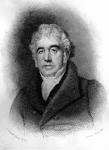
Charles Macintosh |
birth Charles Macintosh Born 29 Dec 1766; died 25 Jul 1843 at age 76. Scottish chemist and inventor who manufactured rubberized cloth used for waterproof clothing. His father's business supplied textile dyes. Charles also entered the textile industry, with partner Charles Tennant in a cloth bleaching business. In 1799, Tennant patented a dry bleaching powder made from chlorine and slaked lime, though it may have been developed mainly by Macintosh. In the 1820's Macintosh went into partnership with a Manchester cotton manufacturer. Seeking uses for coal gasworks waste products, he utilized naptha as a solvent in his famous method of waterproofing cloth (1823) by pressing together two rubberized layers of cloth. His name remains associated with the raincoat made from such cloth. He also patented a steel-making process (1825). |
|
29 Dec 1788

Christian Jürgensen Thomsen |
birth Christian Jürgensen Thomsen Born 29 Dec 1788; died 21 May 1865 at age 76. Danish archaeologist whose designation of the Stone, Iron and Bronze Ages became widely accepted. He was the first curator of the National Museum of Denmark, Copenhagen (1816). He classified the specimens in this tripartite way, on the basis of the material used in making weapons and tools, while he was organising the museum exhibits to show man's progressive cultural and technological development in Europe. It was adopted as the basis of chronological schemes elsewhere in the world by generations of archaeologists. In 1841, he established the first ethnographic museum. In 1849, he became director of the National Museum. He was one of the first to open collections to the public free of charge in the interests of popular education. |
|
29 Dec 1790

Thomas Fuller died |
Thomas Fuller died In 1790, an obituary was published for Thomas Fuller in Boston's Columbian Centinel. “Died—Negro Tom, the famous African calculator, aged 80 years.” He was enslaved from Africa at age 14. Fuller was a prodigy in arithmetical calculation, though he could neither read nor write. Once asked how many seconds a man lived in 70 years, some odd months, weeks and days, he speedily gave an answer that his questioner said was too high, but Fuller was correct as he had included the leap years in his calculation. If, in the course of a calculation, his progress was interrupted by conversation on another subject, he could continue by picking up where he had left off. Dr. Benjamin Rush, an anti-slavery campaigner, used Fuller's ability as an example of the equivalent intellect of both black and white men. |
|
29 Dec 1800

Joaquín Acosta |
birth Joaquín Acosta Born 29 Dec 1800; died 21 Feb 1852 at age 51. Tomás Joaquín Acosta y Pérez de Guzmán was a Colombian geologist, military engineer and historian who began a military career in 1819. He was sent in 1821 by the government to Choco where it was proposed to build a canal between the Atlantic and Pacific Oceans. He spent time in Europe (1825-31) where he learned about mineralogy, road building and military engineering. On his return to Colombia, in 1832, he became Chief Engineer of Roads. In 1834, he attempted a scientific survey of the Colombian region between Socorro and the Magdalena River. He served as Chargé d'Affaires in Washington, D.C. (Jul-Nov 1842). His historical research in Spain on the colonial history of Colombia was published in Compendio (1848). Acosta was active in his nation’s various scientific societies. He wrote many historical and scientific books. |
|
29 Dec 1800

Charles Goodyear |
birth Charles Goodyear Born 29 Dec 1800; died 1 Jul 1860 at age 59. American inventor who baked rubber mixed with sulphur and discovered the vulcanization process which made rubber practical as a commercial product. Previously, rubber was of limited use since it froze hard in winter and sticky in summer. After years of persistent experimentation, Goodyear had created a tough, cured compound, able to withstand heat and stress. Sadly, he was a poor businessman, unable to profit from his invention or effectively patent it abroad. The “vulcanized” name was applied by English rubber pioneer Thomas Hancock, using the sugggestion of a friend to name the process after Vulcan, the Roman god of fire. Nor was Goodyear ever connected to the Goodyear Tire & Rubber Co. which was named in his honour. |
|
29 Dec 1813

Alexander Parkes |
birth Alexander Parkes Born 29 Dec 1813; died 29 Jun 1890 at age 76. British industrial chemist who invented many processes. Parkes was an expert in electroplating, able to silver-plate such diverse objects as a spider web and flowers. He patented a method of rubber coating fabrics to waterproof them (1841), an electroplating process (1843), and a method of extracting silver from lead ore by adding zinc (1850). He produced the first plastic (1855), which he called Parkesine, by dissolving cellulose nitrate in alcohol and camphor containing ether. The hard solid result could be molded when heated, but he could find no market for the material. (This was rediscovered in the 1860s by John Wesley Hyatt, an American chemist, who named it celluloid and successfully marketed it as a replacement for ivory. |
|
29 Dec 1816
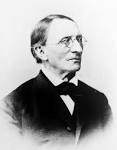
Carl Friedrich Wilhelm Ludwig |
birth Carl Friedrich Wilhelm Ludwig Born 29 Dec 1816; died 23 Apr 1895 at age 78. German physiologist and biochemist who was one of the creators of modern physiology. He applied the experimental approach of chemistry and physics to explain the way the body functions. Ludwig investigated the structure of the kidneys and cardiac activity. The kymograph he invented (1847) continuously recorded blood pressure on a rotating drum. He explained blood circulation in terms of conventional forces, repudiating any mysterious "vital force." With his mercurial blood-gas pump (1859) he extracted gases from blood for study. In 1856, he was the first to keep an organ alive after removal from an animal (a frog heart), using perfusion (pumping blood plasma through them.) He was also first to study the nitrogen content of urine as a measure of protein metabolism. |
|
29 Dec 1823

Great Comet of 1823 |
Great Comet of 1823 (astronomy) Great Comet of 1823 first observed. |
|
29 Dec 1827

Bernhard Sigmund Schultze |
birth Bernhard Sigmund Schultze Bernhard Sigmund Schultze (died 1919), German obstetrician. |
|
29 Dec 1836

Georg August Schweinfurth |
birth Georg August Schweinfurth Born 29 Dec 1836; died 19 Sep 1925 at age 88. German botanist who travelled in the interior of East Africa (from 1868) and studied the inhabitants together with the flora and fauna of the region. During this journey, in Mar 1870, he discovered the River Welle (Uele), explored the upper Nile basin, and charted the western feeders of the White Nile. He wrote about the cannibalistic practices of the Mangbettu, and his discovery of the pygmy Akka confirmed the existence of dwarf races in tropical Africa (The Heart of Africa, 1873). During 1875-88, he lived in Cairo, where he founded the Royal Geographical Society of Egypt. He made historical, geological, ethnographical and botanical investigations ranging from there to the Arabian desert. |
|
29 Dec 1863
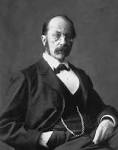
Wilhelm His |
birth Wilhelm His Born 29 Dec 1863; died 10 Nov 1934 at age 70. Swiss cardiologist who in 1893 fully described a group of modified muscle fibres (known as the bundle of His) forming part of the impulse-conducting system of the heart. (It was first noted in 1892 by Stanley Kent.) It runs as a single bundle from the atrioventricular node (between the atria and ventricles) then branches into pathways to the right and left ventricles. It relays an electrical impulse, establishing a single rhythm of contraction through the heart. He was among the first to recognize that the heartbeat originates in the individual cells of heart muscle. During WW I, His served as an advisory internist with several armies. In 1916 he described Trench Fever in Volhynia in Russia. His father of the same name was a famous anatomist. |
|
29 Dec 1864

Henry P. DeForest |
birth Henry P. DeForest Born 29 Dec 1864; died 13 Jun 1948 at age 83. Henry Pelouze deForest was an American gynaecologist and surgeon who in 1902 established the first fingerprint file in the U.S., and invented the dactyloscope, a measuring device to analyze finger print patterns. Shortly after becoming its chief medical examiner, he was requested by the New York Civil Service Commission, to devise a system of personal identification to combat fraud at civil service examinations for police and fire department jobs. Hired stand-ins had been taking the test on behalf of candidates. A scandal resulted when a particular stand-in revealed he had taken the test for a dozen different candidates. DeForest first thought of utilizing the Bertillon anthropometric method, but instead adopted the simpler fingerprinting procedure used by Scotland Yard. This fingerprint file thus began for bureaucratic rather than criminal purposes. The first record was created on 19 Dec 1902. |
|
29 Dec 1888

Andromeda photographed |
Andromeda photographed In 1888, the Great Nebula in Andromeda, M31, was photographed by Isaac Roberts, with a 4-hour exposure using a 20-inch aperture reflecting telescope. It was undoubtedly his finest achievement, for it provided one of the best defined images up to that time. He was a pioneer in the technique of guiding an optical telescope to remain steadily pointed at a particular point in the sky, to compensate during a long-exposure for the rotation of the earth. In the same month, he presented his photographic evidence to a meeting of the Royal Astronomical Society, showing that Andromeda was of the spiral type, illustrating the main idea of the nebula hypothesis. He had made earlier photographs on 15 Nov 1887, and the first two days of 1887. He also successfully photographed other galaxies. |
|
29 Dec 1891

Leopold Kronecker |
death Leopold Kronecker Died 29 Dec 1891 at age 68 (born 7 Dec 1823). German mathematician who worked who worked to unify arithmetic, algebra and analysis, with a particular interest in elliptic functions, algebraic equations, theory of numbers, theory of determinants and theory of simple and multiple integrals. However the topics he studied were restricted by the fact that he believed in the reduction of all mathematics to arguments involving only the integers and a finite number of steps. He believed that mathematics should deal only with finite numbers and with a finite number of operations. He was the first to doubt the significance of non-constructive existence proofs, and believed that transcendental numbers did not exist. The Kronecker delta function is named in his honour. |
|
29 Dec 1896

Lava soap trademarked |
Lava soap trademarked In 1896, "Lava" soap was trademarked by William Waltke & Co. of St. Louis, Missouri. |
|
29 Dec 1905

Henri-Gaston Busignies |
birth Henri-Gaston Busignies Born 29 Dec 1905; died 20 Jun 1981 at age 75. French-American electrronics engineer whose invention (1936) of high-frequency direction finders (HF/DF, or "Huff Duff") permitted the U.S. Navy during World War II to detect enemy transmissions and quickly pinpoint the direction from which a radio transmission was coming. Busignies invented the radiocompass (1926) while still a student at Jules Ferry College in Versailles, France. In 1934, he started developing the direction finder based on his earlier radiocompass. Busignies developed the moving target indicator for wartime radar. It scrubbed off the radar screen every echo from stationary objects and left only echoes from moving objects, such as aircraft. |
|
29 Dec 1911

Klaus Fuchs |
birth Klaus Fuchs Born 29 Dec 1911; died 28 Jan 1988 at age 76. Emil Klaus Julius Fuchs was a German-British physicist who was convicted as a spy on 1 Mar 1950, for passing nuclear research secrets to Russia. He fled from Nazi Germany to Britain. He was interned on the outbreak of WW II, but Prof. Max Born intervened on his behalf. Fuchs was released in 1942, naturalized in 1942 and joined the British atomic bomb research project. From 1943 he worked on the atom bomb with the Manhattan Project at Los Alamos, U.S. By 1945, he was sending secrets to Russia. In 1946, he became head of theoretical physics at Harwell, UK. He was caught, confessed, tried, imprisoned for nine of a 14 year sentence, released on 23 Jun 1959, and moved to East Germany and resumed nuclear research until 1979. |
|
29 Dec 1919

Sir William Osler |
death Sir William Osler Died 29 Dec 1919 at age 70 (born 12 Jul 1849). (Baronet) Canadian physician who revolutionized the medical curriculum in North America, adapting the best of the systems he had observed in England and Germany. He believed that students learn best by doing, teaching medical students at the bedside. He introduced postgraduate training system, instituting a general internship of one year to be followed by a residency of several years. His textbook, The Principles and Practice of Medicine (1892) included the advances of the previous half-century in clinical medical science, and remained the standard text for 40 years. Early in his life, in 1873, he made the most careful description to date of what later were called the "blood-platelets," which was presented to the Royal Society. |
|
29 Dec 1919

William Osler |
death William Osler Sir William Osler (born 1849), physician. |
|
29 Dec 1923
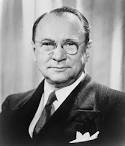
Vladimir K. Zworykin |
Vladimir K. Zworykin (electronics) Vladimir K. Zworykin files his first patent (in the United States) for "television systems". |
|
29 Dec 1927

Anak Krakatoa |
Anak Krakatoa In 1927, Krakatoa began a new volcanic eruption on the seafloor along the same line as the cones of previous activity. By 26 Jan 1928, a growing cone had reached sea level and formed a small island called Anak Krakatoa (Child of Krakatoa). Sporadic activity continued until, by 1973, the island had reached a height of 622 ft above sea level. It was still in eruption in the early 1980s. The volcano Krakatoa is on Pulau (island) Rakata in the Sunda Strait between Java and Sumatra, Indonesia. It had been quiet since its previous catastrophic eruption of 1883. That threw pumice 33 miles high and 36,380 people were killed either by the ash fall or by the resulting tidal wave. The only earlier known eruption was in 1680, and was only moderate. |
|
29 Dec 1929
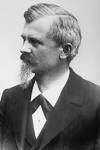
Wilhelm Maybach |
death Wilhelm Maybach Died 29 Dec 1929 at age 83 (born 9 Feb 1846). German engineer and engine designer, who invented the spray carburettor and was the chief designer of the first Mercedes automobiles (1900-01). At age 26, he began designing cars with Gottlieb Daimler and Nikolaus Otto, with whom he developed the four-stroke engine cycle. In Apr 1882, Maybach joined Gottlieb Daimler in a partnership to produce a light-weight, high-speed petrol engine suitable for vehicles. Maybach invented the float-feed carburettor (1893) in which fuel was vaporized by passing it through a jet as a fine spray and mixed with air to produce a combustible mixture for the engine. Maybach designed the first Mercedes car for Daimler in 1901, but retired in 1907 to design and manufacture engines for Zeppelin airships. His son, Karl Maybach, followed him in producing luxury automobiles. |
|
29 Dec 1939
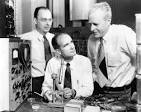
Shockley semiconductor amplifier idea |
Shockley semiconductor amplifier idea In 1939, William Shockley wrote in his laboratory notebook: “It has today occurred to me that an amplifier using semiconductors rather than vacuum is in principle possible.&rdquo. He went on to develop the transistor, for which he shared (with John Bardeen and Walter Brattain) the 1956 Nobel Prize in Physics. |
|
29 Dec 1941

Tullio Levi-Civita |
death Tullio Levi-Civita Died 29 Dec 1941 at age 68 (born 29 Mar 1873). Italian mathematician who was one of the founders of absolute differential calculus (tensor analysis) which had applications to the theory of relativity. In 1887, he published a famous paper in which he developed the calculus of tensors. In 1900 he published, jointly with Ricci, the theory of tensors Méthodes de calcul differential absolu et leures applications in a form which was used by Einstein 15 years later. Weyl also used Levi-Civita's ideas to produce a unified theory of gravitation and electromagnetism. In addition to the important contributions his work made in the theory of relativity, Levi-Civita produced a series of papers treating elegantly the problem of a static gravitational field. |
|
29 Dec 1952
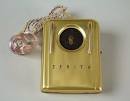
Transistor hearing aid |
Transistor hearing aid In 1952, the first transistor hearing aid went on sale, the model 1010 manufactured by the Sonotone Corporation in Elmsford, NY, U.S. It weighed 3.5-oz, measured 3"x1.5"x0.6" and cost $229.50 (about $1500.00 today). It was a hybrid device consisting of two sub miniature pre-amplifier tubes and a single transistor as the final audio amplifier to benefit from the low power consumption of transistors. The reason for the hybrid design was that the first junction transistors had signal to noise ratios which were inferior to tubes. Within months, transistor production techniques were improved largely eliminating noise, so the hybrid model was shortly discontinued. |
|
29 Dec 1957
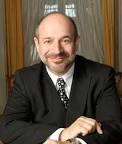
Bruce Beutler |
birth Bruce Beutler Bruce Beutler, American winner of the Nobel Prize in Physiology or Medicine (2011). |
|
29 Dec 1960

Frederick Fuller Russell |
death Frederick Fuller Russell Died 29 Dec 1960 at age 90 (born 17 Aug 1870). American scientist who developed the first successful U.S. typhoid fever vaccine. Russell earned his medical degree in 1893 and was commissed in 1898 as first lieutenant and assistant surgeon in the U.S. Army. In summer 1908, the U.S. Army Surgeon General sent him to Europe to study the experience of the British and German armies in anti-typhoid vaccination. In 1909, Major Russell prepared a laboratory the Army Medical Museum for manufacturing vaccine, and vaccinated volunteers, the first of whom came from the museum and the medical school. By the end of 1910, 10,841 volunteers had been vaccinated. This was made compulsory for military personnel the next year. The reduction in the incidence of the disease was dramatic. |
|
29 Dec 1961

Anton Flettner |
death Anton Flettner Died 29 Dec 1961 at age 76 (born 1 Nov 1885). German inventor who produced a practical helicopter for the German navy (1940). He also developed a device that allowed airplane pilots to raise or lower a plane's nose for better control. It evolved into a mechanism called the Flettner trim-tab control which is still used on all airplanes. He designed a rotor ship (1924) on which he replaced sails with unique propulsion - two 50-ft cylinders, electrically rotated, mounted vertically on the deck. A transatlantic voyage was accomplished using the aerodynamic power of the Magnus Effect which builds pressure behind a rotating cylinder. After WW II, he went to the U.S., and conducted helicopter research for the U.S. Army. He also invented a windmill and the Flettner marine rudder. |
|
29 Dec 1970

William King Gregory |
death William King Gregory Died 29 Dec 1970 at age 94 (born 19 May 1876). American palaeontologist who specialized in anatomy and particularly in dentition (the development of teeth), in fish and mammals. In 1899, he was invited by Dr. Henry Fairfield Osborn and joined the staff of the American Museum of Natural History, New York. Over the years Dr. Gregory planned and supervised a number of exhibitions for the museum. These included one on men of the Stone Age, completing the Hall of Fishes of the World, and one on anatomy that illustrated the evidence of man's origin from lower members of the order of primates. He published extensively during five decades. His books include Our Face From Fish to Man (1929) and Evolution Emerging (1951). |
|
29 Dec 1987

Record stay in space |
Record stay in space In 1987, cosmonaut Yuri Romanenko return to Earth, ending his record 326-day space flight orbiting Earth in the Mir space station. The Soyuz spacecraft landed at a snow-covered site in Kazakhstan. His stay in space broke the previous Soviet record of 237 days. For comparison, the U.S. space endurance record is 87 days. Romanenko rocketed into orbit 6 Feb 1987 with flight engineer Alexander Laveikin who suffered heart problems five months later and was replaced with Alexander Alexandrov. They conducted 1,000 experiments in biology, medicine, materials processing and geology. Romanenko and Alexandrov used the giant Kvant (Quantum) astrophysics laboratory attached to the Mir to collect data from remote parts of the solar system. In a total of 3 space missions he accumulated 430.76 days in space. |
|
29 Dec 1997

Hong Kong bird flu |
Hong Kong bird flu In 1997, Hong Kong began killing its entire chicken population of up to 1.4 million birds to stem the spread of a mysterious avian flu that had already killed four people. The Hong Kong government decision came after birds at two sites were found to be infected with the H5N1 virus. Nothing, animate or inanimate, could be moved in or out of those two infected sites without permission. Birds at the territory's 200 chicken and mixed poultry farms were to be placed in sealed containers and gassed. Owners of close to 1,000 provision shops and market stalls were ordered to kill their stock. The disinfected carcases were sealed in plastic bags and buried at six landfill sites. The government compensated those whose stock was destroyed. |
|
29 Dec 2004
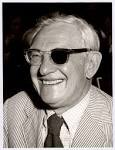
Julius Axelrod |
death Julius Axelrod Died 29 Dec 2004 at age 92 (born 30 May 1912). American biochemist and pharmacologist who (with British biophysicist Sir Bernard Katz and Swedish physiologist Ulf von Euler) received the 1970 Nobel Prize for Physiology or Medicine. Axelrod investigated the mechanism of formation of the hormone noradrenaline, as an important nerve impulse transmitter, specifically his discovery and isolation of the enzyme he called catechol-o-methyl transferase, which degrades chemical neurotransmitters when no longer needed. In effect this resets the nerve to nerve connections ready to transmit the next impulse that arrives. This helped the search for treatment of nervous and mental illnesses. He studied certain psychotropic drugs on the nervous system and the specific route taken by injected drugs. |